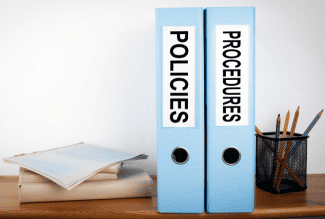New L.A. County rule requires inspections

Slum Housing Enforcement
The Los Angeles County Board of Supervisors has unanimously voted to increase apartment inspections and withhold rent payments from negligent landlords, a vote that comes years after initial plans to overhaul enforcement of healthy housing standards were first introduced.
The 5-0 vote Tuesday sets up a Rental Housing Habitability Program to inspect all apartments in unincorporated parts of L.A. County at least once every four years, a significant change from previous standards.
Landlords who repeatedly fail to fix code violations could have their properties placed into a Rent Escrow Account Program until they make repairs.
“Every county resident deserves to live in a habitable space, just fundamentally,” said Supervisor Holly Mitchell, who co-authored the motion that first proposed these reforms back in April 2022. “I’m glad that we’re here.”
Who is covered
About 1 million L.A. County residents live in unincorporated areas, including East L.A., Westmont and Altadena. Those areas include an estimated 119,000 units of rental housing.
Under current rules, those apartments are not all routinely inspected. L.A.’s Department of Public Health responds to complaints, but in some buildings inspectors only enter 10% of units.
The programs approved Tuesday are largely modeled on how the city of L.A. handles inspections and enforcement. Landlords will have to pay an annual fee of $86 per unit to fund the inspection program, half of which can be passed on directly to tenants.
Tenants speak out
Renters lined up to give public comment during Tuesday’s Board of Supervisors meeting, describing situations where landlords have ignored long-standing issues such as pest and rodent infestations, persistent mold, lack of hot water and malfunctioning electricity.
Erika Elias spoke about her family living in an East L.A. apartment for more than a year-and-a-half without gas or electricity — a situation LAist recently covered.
“I don’t know when I’m going to have a decent shower or a refrigerator full of food,” Elias said in Spanish.
Need Legal Help?
Chat with a real estate lawyer near you. It’s only $5 for a 1-week trial. Ask unlimited questions.
A question of enforcement
After Elias finished, Supervisor Kathryn Barger expressed skepticism that the new approach will succeed where the old one has failed.
“We already have something in place where you can complain,” Barger said. “We’ve had three people come up and say they have filed complaints and nothing’s been done. I don’t want to give a false sense of we’re going to fix this if we’re not.”
Tenant advocates say the new program has a key enforcement tool: financial penalties. Short of prosecution for substandard conditions, which is rare, those pushing for change say only a program that withholds landlords’ rental income will motivate repairs.
Under the plans, the Department of Consumer and Business Affairs will oversee a rent escrow program, holding rent back until repairs are made. Public health officials estimate it will take 15 full-time staffers to carry out the inspection program.
Landlords want a separate track for owners in good standing
Landlord advocates hoped to see county leaders carve out a separate, less frequent inspection program for landlords found to be adhering to habitability laws.
“Responsible housing providers and those operating in excellence should not face the same administrative burden or cost structure as those with non-compliant histories,” California Apartment Association spokesperson Fred Sutton wrote in a letter to the supervisors ahead of the vote. “Resources should be focused on properties with compliance concerns.”
Mitchell put forward an amendment during Tuesday’s meeting to consider creating a “gold star” program for landlords with good records, but that would only start five years into the new inspection paradigm.
Inspections under the new program are set to begin six months after Tuesday’s vote.
Source: LAist















 Accessibility
Accessibility